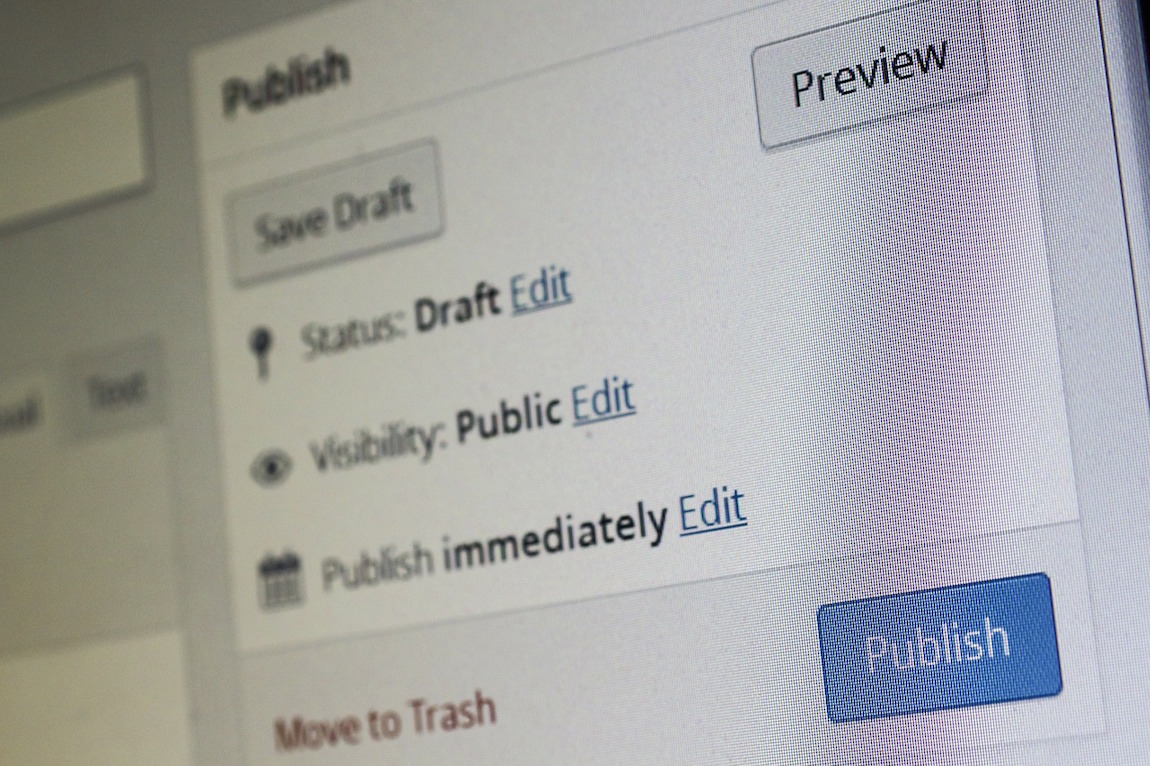Key Content Marketing Stats for Manufacturers in 2017
by MGB2B
 The Content Marketing Institute recently released its annual report: 2017 Manufacturing Content Marketing: Benchmarks, Budgets, and Trends North America. And the results are promising for manufacturers this year. Many who were stuck are starting to find their way through the world of content marketing. And lots of manufacturers are starting to see results.
The Content Marketing Institute recently released its annual report: 2017 Manufacturing Content Marketing: Benchmarks, Budgets, and Trends North America. And the results are promising for manufacturers this year. Many who were stuck are starting to find their way through the world of content marketing. And lots of manufacturers are starting to see results.
Here Are 6 Key Content Marketing Stats for Manufacturers — and What They Mean for Your Business:
- 85% of Manufacturing Marketers Are Using Content Marketing to Reach Their Prospects.
What that means for you: Content marketing may not be part of your marketing plan, but it is likely something your competitors are doing. If you are using content marketing, it’s important that you differentiate your content. The content you are producing should resonate with the audience but also reflect your brand’s strategic positioning in order to accomplish this.
- Of Those Who Don’t Use Content Marketing, 53% Plan to Do So Within the Next Year.
What that means for you: Again, if content marketing is not part of your marketing strategy, 2017 is the year to get it going. Your competitors are likely already on the content train.
- 92% of Content Marketers in the Manufacturing Sector Use Email to Distribute Content.
What that means for you: There are many ways to distribute content, but email is one of the most frequently used. What’s more, manufacturers in particular have success at getting their prospects to open their emails. So having an email program is a must, but it’s also important to know how to do it right. That includes everything from proper segmentation of your lists to intuitive design based on the user experience.
- 63% Proclaim SEM to Be the Most Effective Method for Promoting Content.
What that means for you: Along with email, Paid Search should be among your distribution tactics when you’re ready to put your content out there. It’s an effective way to get new leads — one that can be fine-tuned easily and quickly. You should also consider hiring an SEO Specialist or an agency that can help you with all aspects of Search Engine Marketing — both paid and organic.
- 82% Are Running Print Ads to Promote Their Content.
What that means for you: Advertising in Trade Publications is far from dead. In fact, there are many reasons why you should strengthen your relationship with your trade pub reps. Chief among them — you can score opportunities to promote your content digitally to their lists and drive new leads into your sales funnel.
- 69% of Manufacturers Who Do Content Marketing Attribute Their Success to Good Strategy.
What that means for you: A Content Strategy is one of the most important parts of a successful content program. If you’ve skipped this step, it’s a good idea to go back and make sure you have a plan before you start creating and distributing content in 2017. Make sure your Content Strategy is well-documented so you can measure its success at several points throughout the year.
As you prepare for 2017, Content Marketing is an essential tool to have in your arsenal. If you haven’t already, it’s time to surpass your competitors, and establish yourself as the authority in your industry.
Continue Reading
5 Ways U.S. Manufacturers Can Reap the Rewards of Election Season
by MGB2B
As we all know too well, election season is upon us. And whether you’re a staunch conservative, an unbending liberal, or anything in between, manufacturing is an important part of the conversation. In fact, according to Pew Research, the economy is the top issue for Americans in this election. If you watched the first debate, manufacturing came up at least once or twice in the conversation. That’s because, while the U.S. may face obstacles when it comes to manufacturing, it is still one of the most important drivers of our economy.
So how can you capitalize on this?
The key is for manufacturing companies to show Americans what they do for the economy, how they are creating jobs, coming up with new innovations, and driving America forward. A candidate for local, state, or even U.S. office might pick up your positive story and bring it to the public as an example of success (which can be good or bad depending on how people feel about the candidate). And if you’re really lucky, a national news organization may even cover your story.
Here Are 5 Storytelling Tips for Manufacturers during Election Season:
- Blog About It. Brainstorm the ways you contribute to American progress and get a blog post about it (or even a series) up on your website as soon as you can.
- Promote Those Blogs. Once you have them written, distribute your blogs on your social media sites and email them out to your database. Twitter allows you to promote them frequently and use appropriate hashtags so that industry people (and others) will take notice.
- Shop Your Story Out to Trade Pubs. Send a good old fashioned press release to the publications you deal with most, especially the ones who run your ads regularly.
- Shop Your Story Out Beyond Your Own World. A good, human story about the economy is valuable not just to people in your industry, but to bigger news organizations. If it’s a strong story and it’s written well, they might just pick it up.
- Make a Video. Obviously, time is running out to get in on this election, so this may not be an option for you unless you have an in-house team or an agency that can pull off a great video before November. But a video that shows your company’s progress and tells the story about how you are contributing to the American economy can go a long way. And it’s something that can live online long after the election is over. Sending a video to accompany your press release increases the likelihood that your story will grab the attention of news organizations. Who knows? They may even want to use a clip on TV.
You won’t know the possibilities until you try it. So if you truly have a great manufacturing story, and you think it’s time for America to hear it, put it out there. At this point, voters are aching to hear a positive story. You might as well be the bearer of good news.
Continue ReadingB2B Monday Myth: I Don’t Need Twitter Because I’m Already on LinkedIn
by MGB2B
The Myth: I don’t need Twitter because I’m already on LinkedIn.
The Truth: When used correctly, Twitter can be an amazing marketing tool for expanding your business.
Twitter and LinkedIn are easily two of the biggest social media platforms utilized by expanding businesses. However, some believe that LinkedIn is the only platform you need to make lasting connections with potential customers. They simply aren’t aware of the benefits of Twitter for B2B brands. The truth is, Twitter and LinkedIn have different pros and cons, and when you use both, they complement each other quite nicely.
According to the Content Marketing Institute’s report: 2016 B2B Content Marketing Trends, 55% of B2B brands found Twitter to be effective, while 66% found LinkedIn to be an effective social media platform. The difference in number may be rooted in the approach that businesses take on Twitter. Twitter is not a “set it and forget it” platform – it requires planning and attention. When you put the effort into it, Twitter opens you up to a whole new world of users that may not be available to you on LinkedIn at all.
Here Are the Benefits of Twitter for B2B Brands:
- You Can Post As Often As You Like. We don’t recommend that companies post content on LinkedIn more than twice a day, max. On Twitter, you can have several posts a day. In fact, it’s smart for your brand to do so. Especially with the accompanied use of hashtags to grab audiences searching for topics that are related to your business.
- It’s a Great Listening Tool. Twitter is the perfect spot to listen to both your customers and your competitors. The platform makes it very easy to make lists and categorize users (i.e. competitors, industry experts, prospective customers) that post content that is useful to you. You can more efficiently find out what’s going on in the industry, see what your competitors are doing right or wrong, and what your target audience values most – all in real time.
- You Can Use Twitter to Build Relationships. Use retweeting as a conversation starter. If you agree with something a prospect posted or have something to add, you can retweet their post, mention them with the “@” and use that retweet to talk to them about what matters to them (and you) most.
- Or to Fix and Solidify Relationships. Address the concerns of your followers on Twitter to show the world that you are willing to help them out as quickly as possible. This shows that you are interested in remaining completely transparent. Twitter also offers great tips for both addressing customers’ concerns and harnessing the power of their positive reviews on the platform.
- Lead Generation via Ads. While you may attract a few more bots than you would with a LinkedIn ad, Twitter ads can actually be very effective. That’s because you can use keywords to target ads based on relevant conversations people are having on Twitter. You can also use ads for event targeting to grab the attention of prospects when they are the most actively engaged on what’s going on in your industry.
For the most part, you can think of Twitter as bottom-floor networking. Once you get to know someone through Twitter, then you can take the relationship to the next level — LinkedIn. The trick is doing it in a way that is subtle, friendly, and engaging. Plan out your Twitter presence carefully, and it can be a very lucrative part of a full B2B campaign.
Continue Reading
